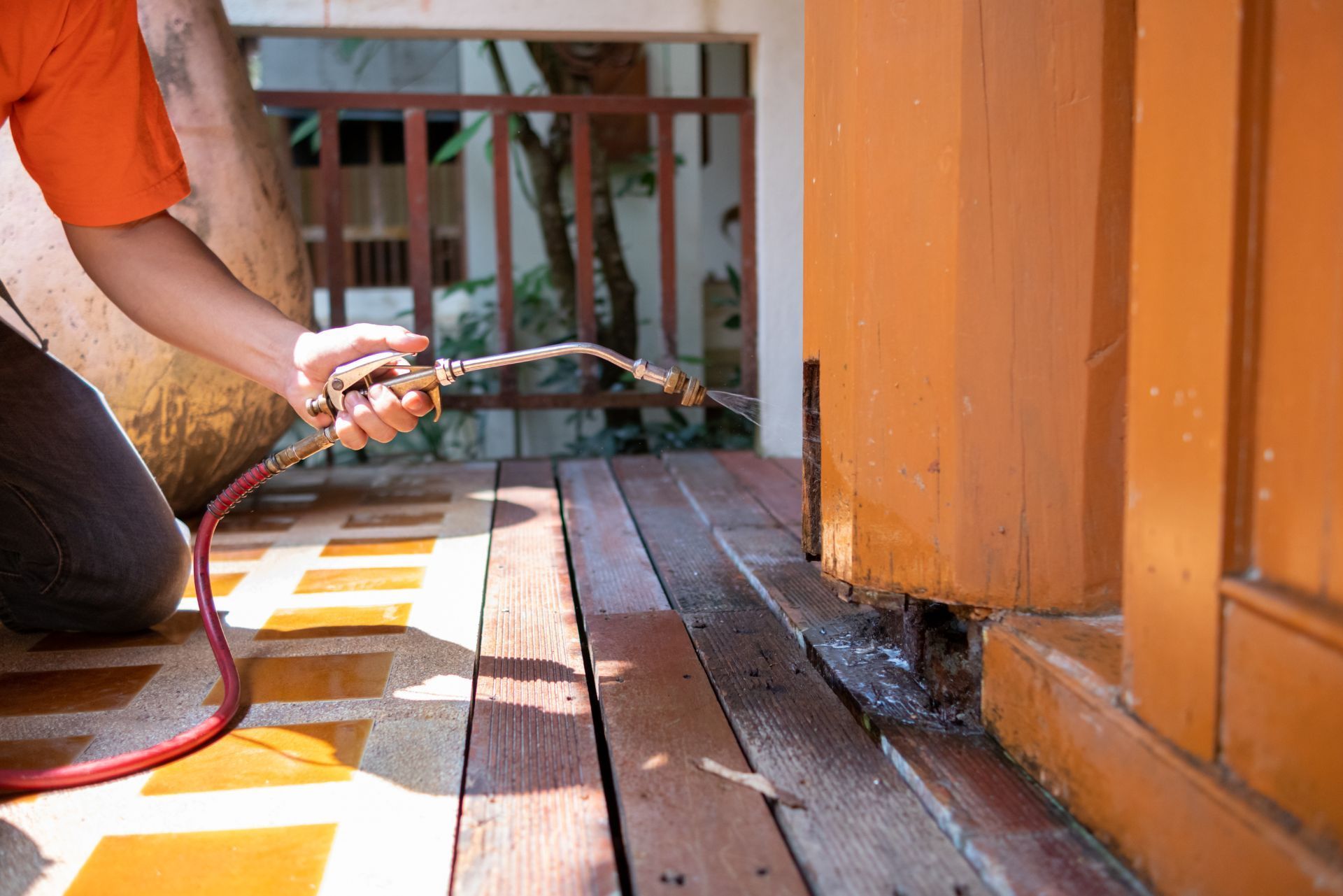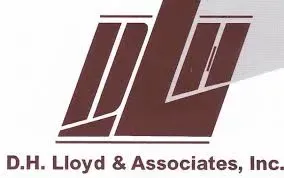Top 3 Recommended Business Policies
Index
Contact Us
Pest control is a vital service that helps maintain public health and protects property from unwanted intruders. Like any other business, pest control companies in Maryland must secure appropriate insurance coverage to safeguard their operations. This article delves into everything you should know about pest control insurance in Maryland, including its basics, specific regulations, cost factors, provider selection, common questions, and future trends.
Understanding the Basics of Pest Control Insurance
Pest control insurance is a specialized form of liability insurance designed to cover businesses that provide pest control services. This insurance typically includes coverage for property damage, bodily injury, and professional liability arising from the services offered.
What is Pest Control Insurance?
Pest control insurance is essentially a safety net for pest control companies. It protects businesses from potential financial ruin due to lawsuits or claims arising from accidents that occur during pest control operations. Common incidents might involve a client claiming property damage due to chemical applications or injuries resulting from improper pest management practices. Furthermore, this type of insurance can also cover legal fees associated with defending against claims, which can be a significant financial burden for small businesses.
In addition to the standard coverage, many pest control insurance policies can be customized to include additional protections, such as coverage for equipment damage or loss, employee injuries, and even environmental liability. This flexibility allows business owners to tailor their insurance to fit their specific operational needs and risks, ensuring comprehensive protection.
Why is Pest Control Insurance Important?
The significance of pest control insurance cannot be overstated. It provides business owners with peace of mind, knowing they are protected against unexpected events. Moreover, having this insurance is often a requirement to obtain licenses, bid on contracts, or even secure loans.
Additionally, in an industry where professionals often work with hazardous materials, having the right insurance is crucial for ensuring that both the business and its clients are protected. It helps maintain customer trust as insured companies demonstrate their commitment to professional standards and accountability. Beyond just legal and financial protection, pest control insurance can also enhance a company’s reputation. Clients are more likely to choose a service provider that can show proof of insurance, as it reflects a level of professionalism and responsibility that is essential in building long-term relationships.
Moreover, in an era where consumer awareness is at an all-time high, clients are increasingly seeking out businesses that prioritize safety and risk management. Pest control companies that can provide evidence of adequate insurance coverage may find themselves with a competitive edge in the marketplace. This not only helps in attracting new clients but also in retaining existing ones, as customers feel more secure knowing that their service provider is equipped to handle any unforeseen issues that may arise during the pest control process.

The Specifics of Maryland Pest Control Insurance
Understanding the local specifics regarding pest control insurance is essential for any business operating in Maryland. The state has specific regulations and coverage requirements that businesses need to be aware of.
State Regulations for Pest Control Insurance in Maryland
Maryland has regulations that govern pest control services, including mandatory licensing for businesses and specific insurance requirements. Businesses must have general liability insurance, which is typically around $1 million per occurrence and $2 million in aggregate coverage, to operate legally.
In addition, some clients, especially commercial clients, may require higher levels of coverage. Therefore, it is essential for pest control operators to stay updated on state legislation to ensure compliance. This includes understanding the nuances of the Maryland Department of Agriculture's regulations, which oversee pesticide application and safety standards. Failing to comply with these regulations can result in fines and loss of license, making it crucial for businesses to maintain thorough records and documentation of their practices.
Coverage Options for Maryland Pest Control Businesses
When it comes to coverage, pest control companies in Maryland have several options. The most common coverage types include:
- General liability insurance: Covers legal costs for bodily injury and property damage claims.
- Professional liability insurance: Protects against claims of negligence or failure to perform professional duties.
- Commercial auto insurance: Covers vehicles used for business purposes.
- Workers' compensation insurance: Required for businesses with employees, protecting them in case of job-related injuries.
It is advisable to evaluate the specific services offered and the potential risks involved when selecting insurance policies to ensure comprehensive coverage. For instance, companies that specialize in environmentally-friendly pest control methods may benefit from additional coverage options that address the unique liabilities associated with using organic or less toxic substances. Furthermore, as technology evolves, some pest control businesses are incorporating advanced techniques such as thermal imaging or drone inspections, which may also necessitate specialized insurance to cover any potential risks associated with these innovative practices.
Cost Factors for Pest Control Insurance in Maryland
The cost of pest control insurance can vary greatly based on several factors. Understanding these can help business owners manage their insurance budgets effectively.
The Role of Business Size and Services
The size of a pest control business and the range of services provided directly influence insurance premiums. Larger companies with more employees and a broader service selection typically face higher premiums due to increased exposure to claims.
Moreover, specialized services that involve higher risks, such as fumigation, may lead to significantly higher insurance costs. It's essential for owners to assess their unique operational characteristics when estimating insurance needs. For instance, businesses that offer eco-friendly pest control solutions may find that their insurance premiums are lower, as they often face fewer claims related to chemical exposure and environmental damage. This not only helps in cost management but also aligns with a growing consumer preference for sustainable practices.
Impact of Location on Insurance Costs
Geography plays a key role in determining the cost of pest control insurance. Maryland's varied landscapes and densely populated areas result in different risk profiles. Urban areas may see higher premiums due to increased property value and potential for claims.
In contrast, rural areas may have lower premiums, but other factors such as local regulations and specific pest-related risks also need to be taken into account. For example, businesses operating in regions prone to specific infestations, like termites or bed bugs, may face higher premiums due to the increased likelihood of claims. Additionally, local weather patterns can influence pest behavior, leading to fluctuations in demand for services and, consequently, insurance costs. Thus, conducting market research and comparing insurance rates regionally can help businesses find suitable policies. Engaging with local pest control associations can also provide valuable insights into common risks and insurance solutions tailored to specific areas.
Selecting the Right Pest Control Insurance Provider
Choosing an insurance provider is a critical step for pest control companies. The right provider can make a significant difference in the coverage and reliability of service. With the pest control industry facing unique challenges, having a tailored insurance policy can protect businesses from unforeseen liabilities and operational risks.
Key Considerations When Choosing an Insurance Provider
When selecting an insurance provider, there are several factors to consider:
- Reputation: Research the insurer’s reputation within the pest control industry and among peers.
- Coverage options: Ensure the provider offers comprehensive coverage tailored to pest control businesses.
- Customer service: Evaluate the insurer’s responsiveness and support services.
- Financial stability: Review the financial standing of the insurer to ensure they can cover claims.
These considerations will help business owners select an insurance provider who understands their unique needs and provides reliable service. Additionally, it is beneficial to look for insurers who specialize in pest control or have experience working with similar businesses, as they will be more familiar with the specific risks involved in the industry. Engaging with an insurance broker who understands the nuances of pest control can also provide valuable insights and help navigate the complexities of various policies.
Tips for Comparing Insurance Quotes
When comparing quotes, it’s crucial to look beyond just the price. Here are some tips to ensure you make the right choice:
- Request detailed descriptions of coverage options and exclusions from each provider.
- Compare similar levels of coverage rather than base premiums.
- Ask about available discounts, such as those for bundled policies or claims-free history.
- Consult with industry peers for recommendations and experiences with different insurers.
Taking these steps will ensure that you receive the best value for your pest control insurance needs while safeguarding your business and customers. Furthermore, consider the claims process; understanding how quickly and efficiently an insurer processes claims can save you significant time and stress in the event of an incident. It’s also wise to review the policy regularly, as your business evolves and grows, ensuring that your coverage remains adequate and relevant to your current operations and risks.

Frequently Asked Questions about Maryland Pest Control Insurance
Despite its importance, many pest control business owners have questions about pest control insurance. Addressing these can assist in dispelling confusion and enhancing understanding. The landscape of pest control is complex, and the right insurance can provide peace of mind while allowing business owners to focus on their core operations without the constant worry of potential liabilities.
Common Queries about Pest Control Insurance
Some of the frequently asked questions by business owners include:
- What types of risks does pest control insurance cover?
- Is pest control insurance mandatory in Maryland?
- How can I lower my insurance premiums?
Each of these questions underscores the importance of having a clear understanding of what pest control insurance entails and how it operates within the industry. For instance, pest control insurance typically covers a range of risks, including property damage, bodily injury, and even errors and omissions in service. Business owners should also be aware of specific exclusions that may apply to their policies, as this knowledge can help them tailor their coverage to better suit their unique operational needs.
Misconceptions about Pest Control Insurance in Maryland
Many misconceptions exist about pest control insurance that can lead to misunderstandings. Common myths include:
- All insurance policies are the same – In reality, coverage varies widely, making it essential to shop around.
- Pest control insurance is a waste of money – Accidents can happen, and having insurance prevents financial strain from unforeseen events.
Understanding these misconceptions can empower business owners to make informed decisions about their insurance needs. Additionally, many business owners may not realize that certain policies can include coverage for specialized services, such as termite inspections or eco-friendly pest control methods. This can be particularly beneficial in a competitive market, where offering comprehensive services can set a business apart from its competitors. Moreover, staying informed about the evolving regulations and standards in pest control can also help business owners choose the right insurance that aligns with industry practices and legal requirements.
Future Trends in Pest Control Insurance
The landscape of pest control insurance is constantly evolving. Keeping abreast of emerging trends is crucial for business owners to stay competitive and protected.
Predicted Changes in the Insurance Landscape
As the pest control industry adapts to new technologies and methods, so does the insurance landscape. Increased use of drones, eco-friendly chemicals, and integrated pest management practices might lead to the development of new coverage types tailored for these advancements.
Moreover, with the rising emphasis on business sustainability and environmental responsibility, insurance policies might increasingly incorporate green practices, incentivizing businesses to adopt eco-friendly methods. This could include discounts for companies that utilize organic pest control solutions or those that demonstrate a commitment to reducing their carbon footprint through sustainable practices.
Additionally, the integration of data analytics and artificial intelligence in pest control operations may lead to more personalized insurance plans. Insurers could leverage real-time data to assess risk more accurately, allowing for dynamic pricing models that reflect the actual risk exposure of a business. This shift could not only enhance the precision of coverage but also foster a more transparent relationship between insurers and pest control operators.
Preparing Your Business for Future Insurance Needs
To prepare for future insurance needs, business owners should consider:
- Staying informed about industry changes and insurance innovations.
- Conducting regular reviews of insurance policies and coverages.
- Investing in training for employees regarding safety and compliance to mitigate risks.
By taking proactive steps, you ensure that your pest control business is well-prepared for any changes in the insurance landscape, safeguarding your interests in the long term. Furthermore, engaging with industry associations and attending relevant workshops can provide valuable insights into best practices and emerging trends, helping you to stay ahead of the curve.
Networking with other pest control professionals can also yield beneficial information regarding their experiences with insurance providers and claims processes. Sharing knowledge within the community can lead to better preparedness and a collective understanding of the evolving insurance requirements, ultimately enhancing the resilience of the entire industry.
In conclusion, Maryland pest control insurance is an essential component for businesses operating in the sector. Understanding its fundamentals, state requirements, and future trends can help owners navigate the complexities of securing the right coverage, ensuring comprehensive protection for their operations and peace of mind.
For over 40 years D.H. Lloyd & Associates has provided commercial insurance solutions covering multiple facet of business risk.
QUICK LINKS
CONTACT US
Phone:
202-223-1506
Email: contactus@dhlloyd.com
Address: 1625 K St NW, Washington, DC 20006, United States
All Rights Reserved | D.H. Lloyd & Associates | Privacy Policy | Legal Disclaimer | Sitemap | Built & SEO'd by Convirtue

